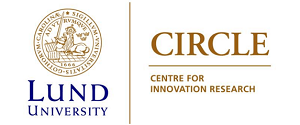No 2016/23: Smart Specialization as an innovation-driven strategy for economic diversification: Examples from Scandinavian regions
Bjørn Asheim (), Markus Grillitsch () and Michaela Trippl ()
Additional contact information
Bjørn Asheim: University of Stavanger, Postal: Norway
Markus Grillitsch: CIRCLE, Lund University, Postal: CIRCLE, Lund University, PO Box 117, SE-22100 Lund, Sweden
Michaela Trippl: CIRCLE, Lund University, Postal: CIRCLE, Lund University, PO Box 117, SE-22100 Lund, Sweden
Abstract: This book chapter provides conceptual and empirical foundations for smart specialisation, a policy approach of far-reaching importance in the European context. We interpret the very notion as “diversified” specialisation into areas of existing or potential competitive advantage, which differentiates a region/nation from others. “Smart” relates to the identification of these areas through a process of entrepreneurial discovery, in which all actors are mobilized to be able to discover domains for securing existing and future competitiveness. Competitive advantage through smart specialization can be promoted in all types of industries but based on the industry specific modes of innovation and knowledge bases, which is illustrated through case studies in Denmark, Sweden, and Norway. Depending on the preconditions, we find that variegated strategies of smart specialisation are pursued, including building the absorptive capacity of DUI based firms by increasing their research based competence (introducing analytical knowledge), combining unrelated knowledge bases to move into new related and unrelated industries, combining related knowledge bases to move into unrelated industries, and moving into high-value added niches by introducing symbolic knowledge in traditional sectors.
Keywords: Smart specialisation; policy; innovation; economic diversification; entrepreneurial discovery; knowledge bases; new path development; competitive advantage; regions
JEL-codes: O18; O30; O38; P48; R10; R58
35 pages, August 12, 2016
Full text files
201623_asheim_et_al.pdf
Questions (including download problems) about the papers in this series should be directed to Torben Schubert ()
Report other problems with accessing this service to Sune Karlsson ().
RePEc:hhs:lucirc:2016_023This page generated on 2024-09-13 22:16:05.

